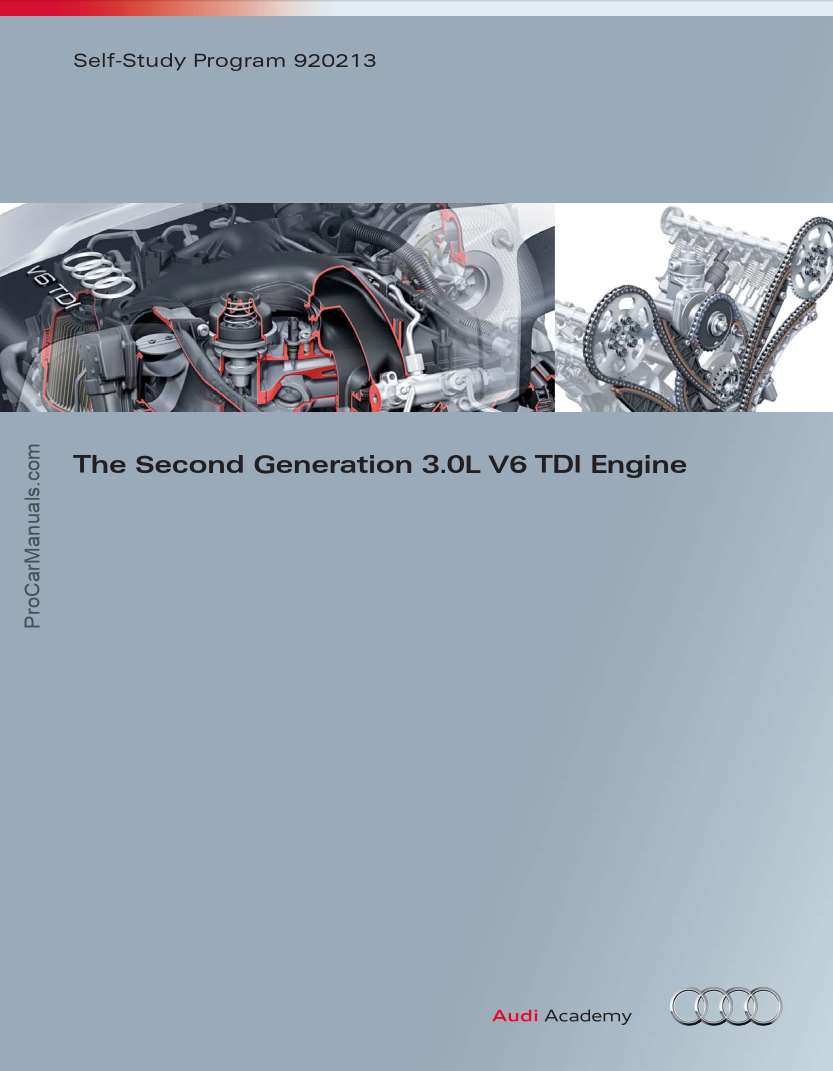Self Study Program 920213 – The Second Generation 3.0L V6 TDI Engine PDF. The success story for V6 TDI engines at Audi began in 1997 with the introduction of the world’s first four-valve 2.5 liter V6 TDI with a distributor injection pump fuel system.
In late 2003, this engine was followed by a 3.0 liter V6 TDI with common rail fuel injection. A power reduced 2.7 liter version was introduced in 2004 but was not offered in the U.S. market.
V6 TDI engines have evolved with much success in various Audi and VW Group models.
The second generation 3.0L V6 TDI engine features state-of-the-art diesel technology, such as a common rail fuel system with piezo fuel injectors, systematic thermal management, and extensive friction reducing improvements. This ensures that lower emissions and higher fuel economy are achieved.
CONTENTS
- Introduction
- Technical Features
- Specifications
- Engine Design
- Cylinder Block
- Crankshaft Assembly
- Chain Drive System
- Cylinder Head
- Oil Circuit
- Oil Circuit
- Engine Oil Pump with Integral Vacuum Pump
- Engine Oil Cooler with Thermostat Controlled Bypass Port
- Cooling System
- Overview
- Coolant Circuit and Thermal Management System
- Cylinder Head Cooling Circuit
- Cylinder Block Cooling Circuit
- Exhaust Gas Recirculation
- Overview
- Active EGR Cooler
- Intake Air Ducting
- Turbocharging
- Charge Air Cooling
- Common Rail Injection System
- Chain-Driven Injection System
- Fuel Delivery System
- Engine Management
- System Overview
- Special Tools and Workshop Equipment
- Knowledge Assessment
The Self-Study Program provides introductory information regarding the design
and function of new models, automotive components, or technologies.
The Self-Study Program is not a Repair Manual!
All values given are intended as a guideline only.
For maintenance and repair work, always refer to current technical literature.
Language: English
Format: PDF
Pages: 34
Self Study Program 920213 – The Second Generation 3.0L V6 TDI Engine


